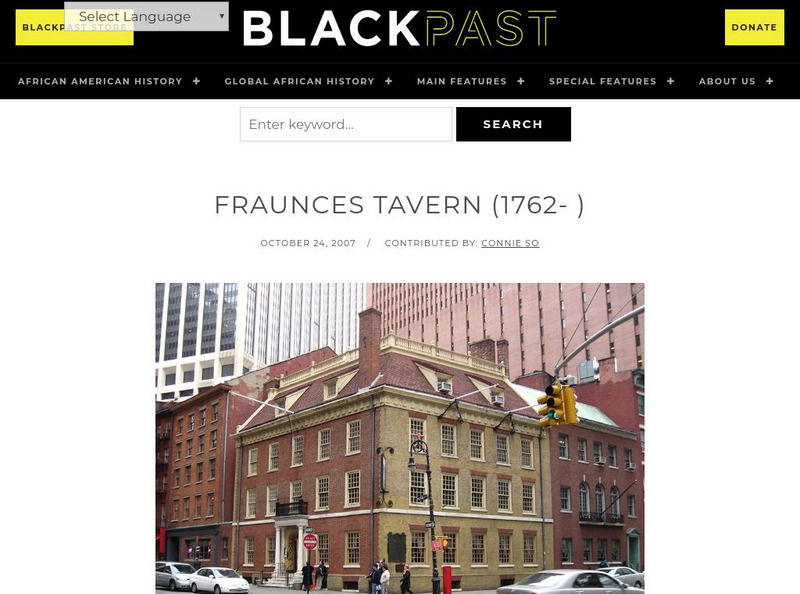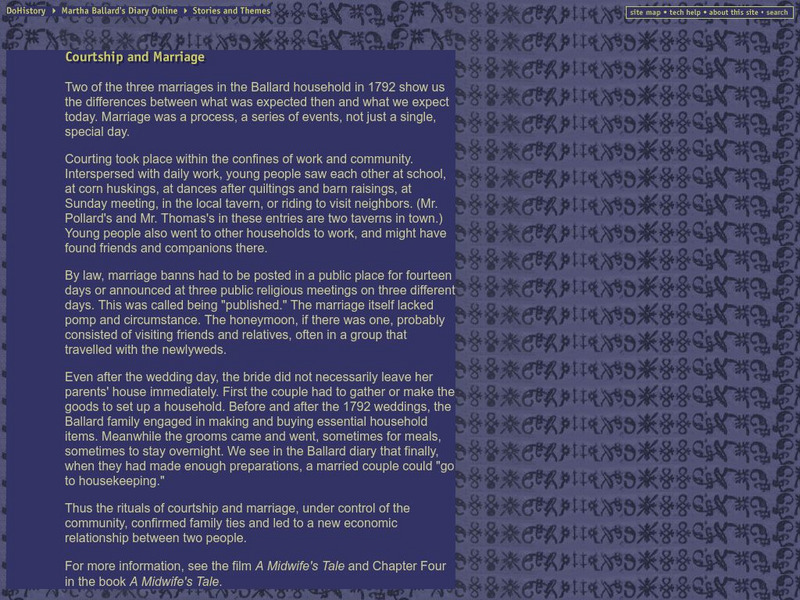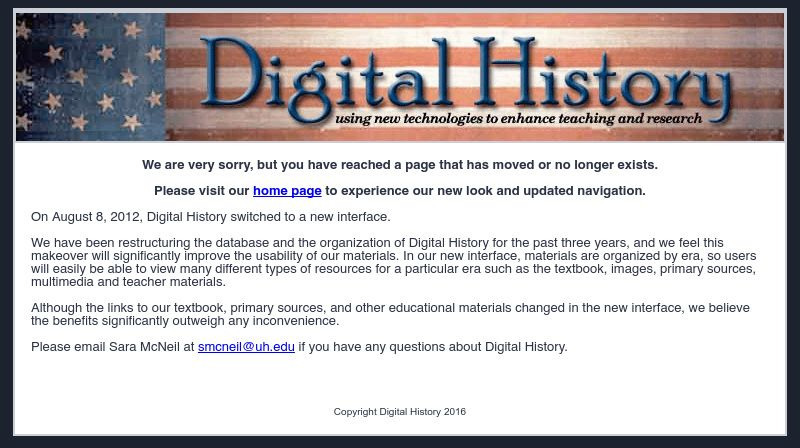Other
Mount Vernon Ladies' Association: 5 Issues at the Constitutional Convention
There were 5 main issues that the delegates to the Constitutional Convention argued and debated: Slavery, Representation, State v. Federal Powers, Commerce, and Executive Powers. Analyze these issues by reading the following summaries,...
University of Groningen
American History: Outlines: Drafting the Constitution
Essay covers from the Articles of Confederation and the problems of disunity of the new states after the Revolutionary War, internally as well as externally, to the Constitutional Convention, an attempt to address the Articles' problems....
Annenberg Foundation
Annenberg Learner: America's History in the Making: The New Nation
After the War of Independence, Americans were unable to agree on the form of their federal government. This unit explores how those conflicts played out as the new Republic defined its identity in relation to other nations.
Other
Stcc: Shays' Rebellion and the Making of a Nation
An extensive site that tells the story of Shay's Rebellion which took place after the Revolution in Massachusetts. Includes historic scenes, artifacts, documents, people, themes and essays, maps, songs and music, a timeline, and videos,...
Other
Indian Historical Bureau: Land Ordinance of 1785
Read the text of the Land Ordinance of 1785, which was written to manage the land controlled by the Confederation government west of the Appalachian Mountains, land that became part of the United States after the Revolutionary War.
University of Notre Dame
Colonial Fiscal Documents
Although this site talks about Massachusetts Treasury Certificates, it gives the student a good explanation of wartime inflation during and after the Revolutionary War.
Black Past
Black Past: Brace, Jeffrey (1742? 1827)
Read about the slave, Jeffrey Brace, who enlisted in the Continental Army. Find out what happened to him and his family after the Revolutionary War.
Khan Academy
Khan Academy: Us History: 1754 1800: The Constitutional Convention
Shortly after the end of the Revolutionary War, American leaders realized that the nation needed a new, stronger Constitution. But what would the new system of government look like?
Digital History
Digital History: The Sections [Pdf]
Soon after the end of the Revolutionary War, the characteristics of the various parts of the new United States established themselves. Find out about the sectionalism, economy, and needs in the country in the early 1800s--the...
Black Past
Black Past: Fraunces Tavern
An encyclopedia article about the role of the Fraunces Tavern, owned by the black merchant, Samuel Fraunces, before, during, and after the Revolutionary War.
Other
Virginia Places: Places Associated With Patrick Henry
This site provides a detailed biography of Patrick Henry, told through the places he has been. Content covers Henry's role before, during, and after the Revolutionary War.
Other
Mary Ballard's Diary on Line: Courtship and Marriage
A look at courtship and marriage in the period right after the Revolutionary War through the diary of Mary Ballard. Contains a brief explanation of courtship in this period and sections of the diary related to the topic.
Georgia Humanities Council and the University of Georgia Press.
New Georgia Encyclopedia: Nathanael Green (1742 1786)
General Nathanael Greene was commander of the Southern Department of the Continental army and a respected leader that helped America win the Revolutionary War. Here you can read about his early life, military career, the Southern...
Other
Margaret Cochran Corbin
This resource has the story of Margaret Corbin. She actually took charge of a cannon during the Revolutionary War after her husband was killed. She was wounded in her shoulder, chest, and jaw from which she never fully recovered.
A&E Television
History.com: Continental Congress
From 1774 to 1789, the Continental Congress served as the government of the 13 American colonies and later the United States. The First Continental Congress, which was comprised of delegates from the colonies, met in 1774 in reaction to...
Writing Fix
Writing Fix: Compare and Contrast Lesson: Opposing Points of View in History
After reading/listening to the picture book I am the Dog I am the Cat by Donald Hall in which two characters have opposing viewpoints, students are asked to look deeply at opposing viewpoints of real people just before the Revolutionary...
John F. Kennedy Presidential Library & Museum
Jfk Presidential Library and Museum: Jfk in History: The Bay of Pigs
The John F. Kennedy Library and museum provides a detailed description of how the Bay of Pigs Invasion came about, what happened and the aftermath of the event. The information is thorough and includes pictures of John F. Kennedy...
Digital History
Digital History: Neutrality and the Jay Treaty [Pdf]
See why a war between Great Britain and France showed the vulnerablity of the new United States. Should the United States help France, after that country gave so much in the Revolutionary War, and risk the economic and military enmity of...
ClassFlow
Class Flow: The New Republic
[Free Registration/Login Required] In this flipchart students will learn how the United States first established itself and began to operate. Students will also evaluate Hamilton's and Madison's plan to reduce the national debt after the...
Independence Hall Association
U.s. History: Revolutionary Changes and Limitations: Women
Often the ideal and reality do not conincide for quite some time. That's true of the ideal of true equality between the sexes after the War for Independence. See why the end of the war did not bring indepence for married women, and why...
Other
As I Please: Unfurling the Flags of John Paul Jones
An essay on John Paul Jones and a history of the American flags he flew on his ships. The essay was written shortly after Sept. 11, 2001.
Alabama Learning Exchange
Alex: American Revolution Lesson: The Regulars Are Coming!
In this lesson, students will review information about Paul Revere and the American Revolution. Students will also determine facts and opinions about the American Revolution. After viewing primary sources, students will complete a...
University of Oregon
Mapping History Project : European Possessions Bordering the u.s.: 1783
This is a simple, but clear map showing the land claimed by Spain and Britain after the Treaty of Paris in 1783. Notice the disputed land claims along the border of what is now the United States.
Digital History
Digital History: Antebellum Slavery
The ideals of liberty after the Revolutionary War brought freedom to many slaves. Read about why the institution of slavery rebounded after the introduction of the cotton gin.





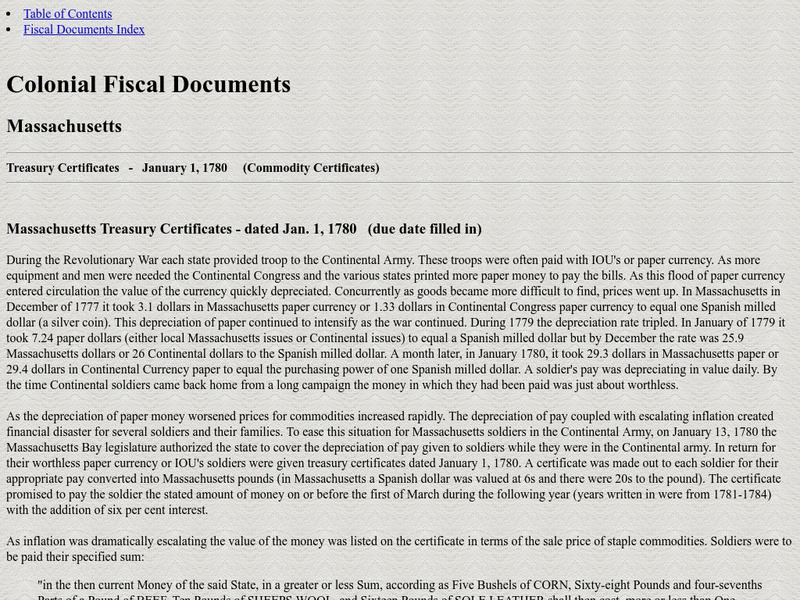
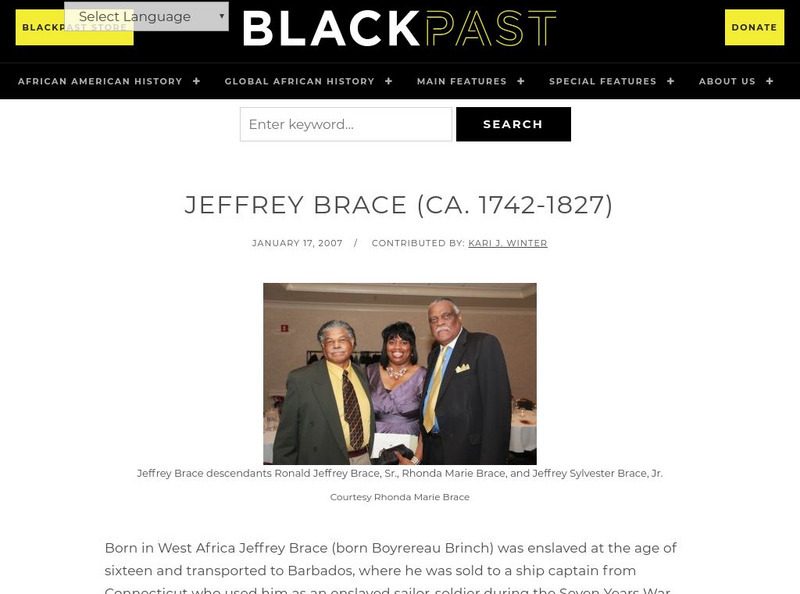

![Digital History: The Sections [Pdf] Website Digital History: The Sections [Pdf] Website](https://static.lp.lexp.cloud/images/attachment_defaults/resource/large/FPO-knovation.png)
